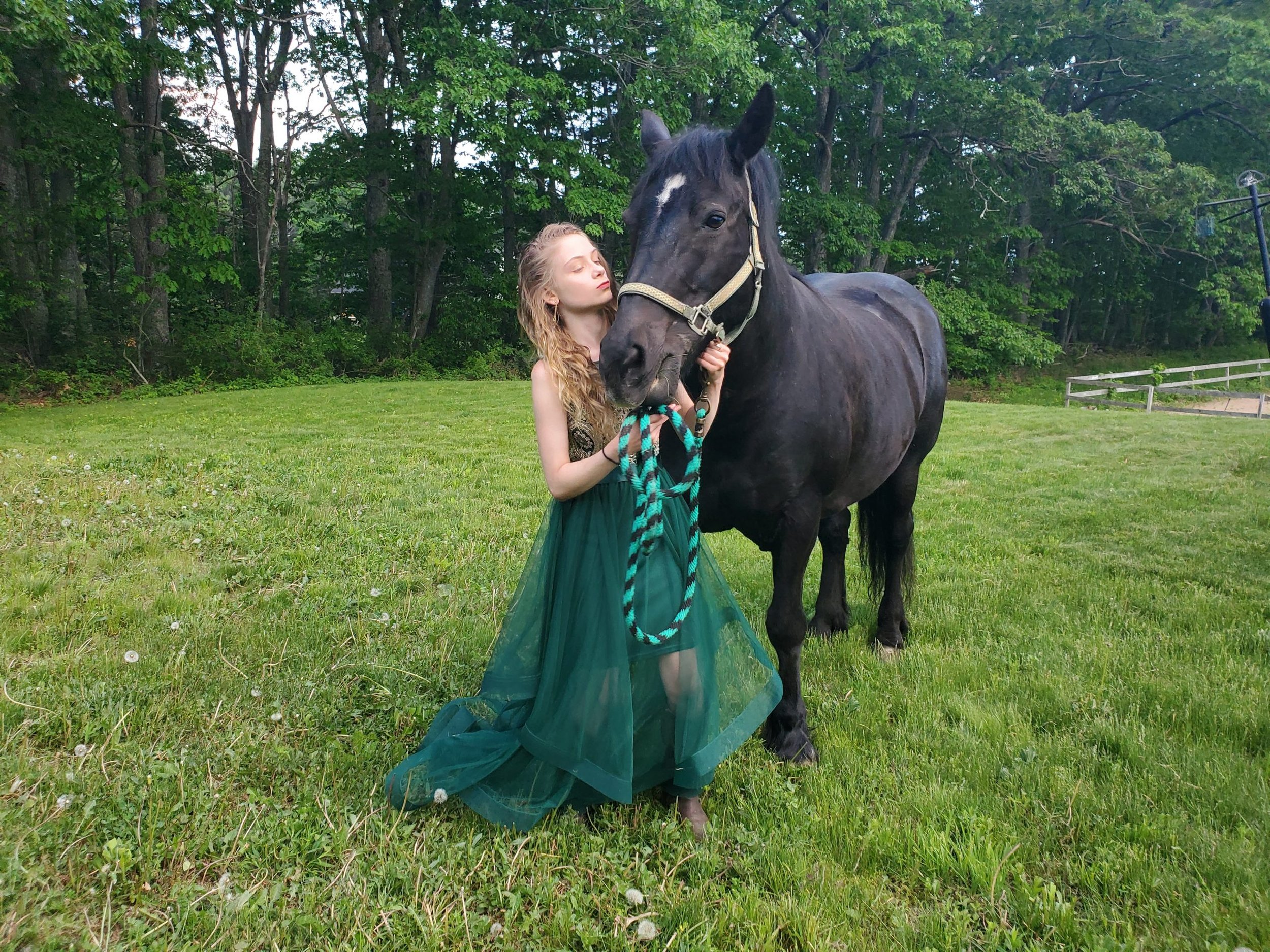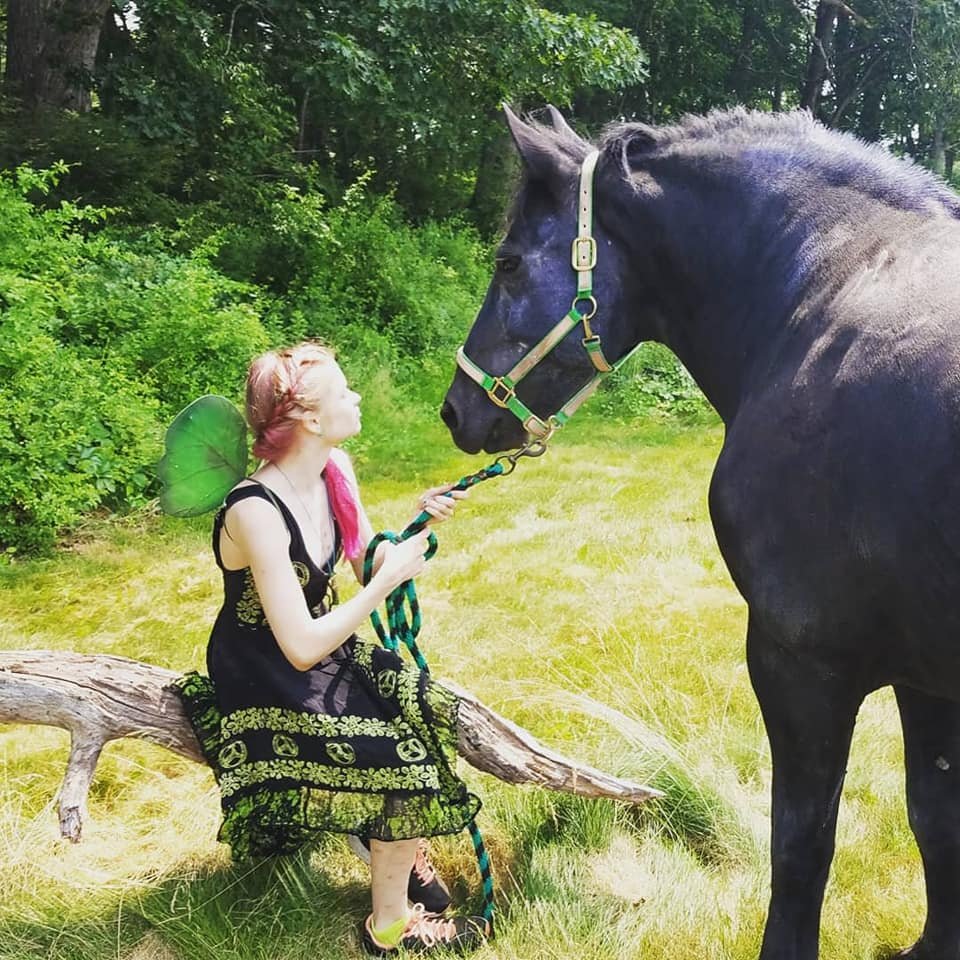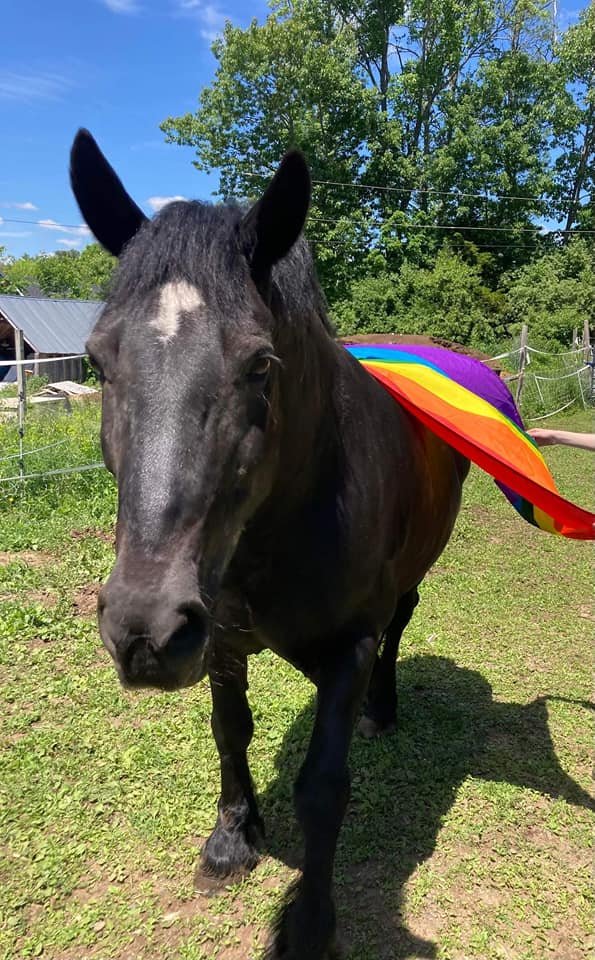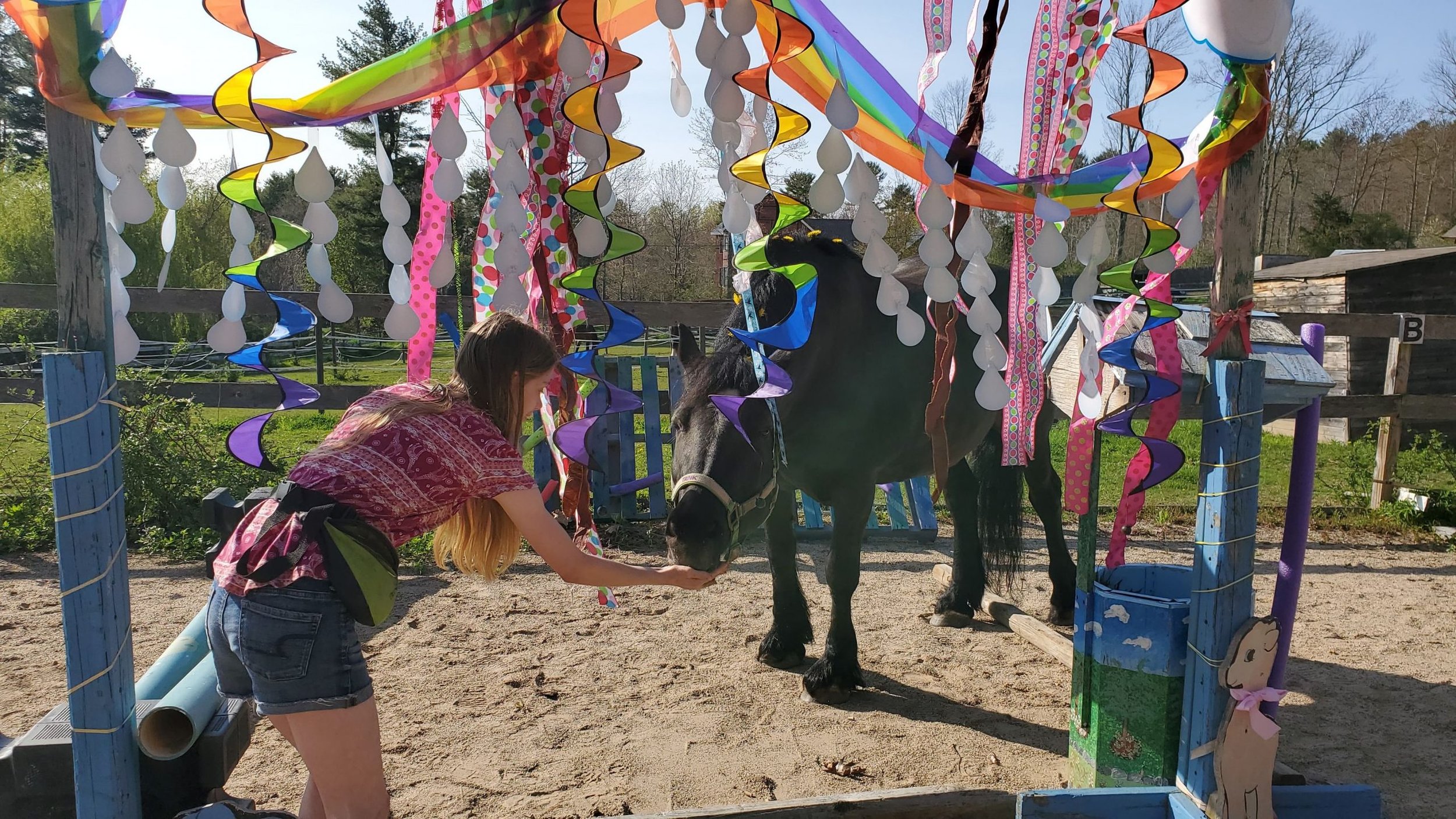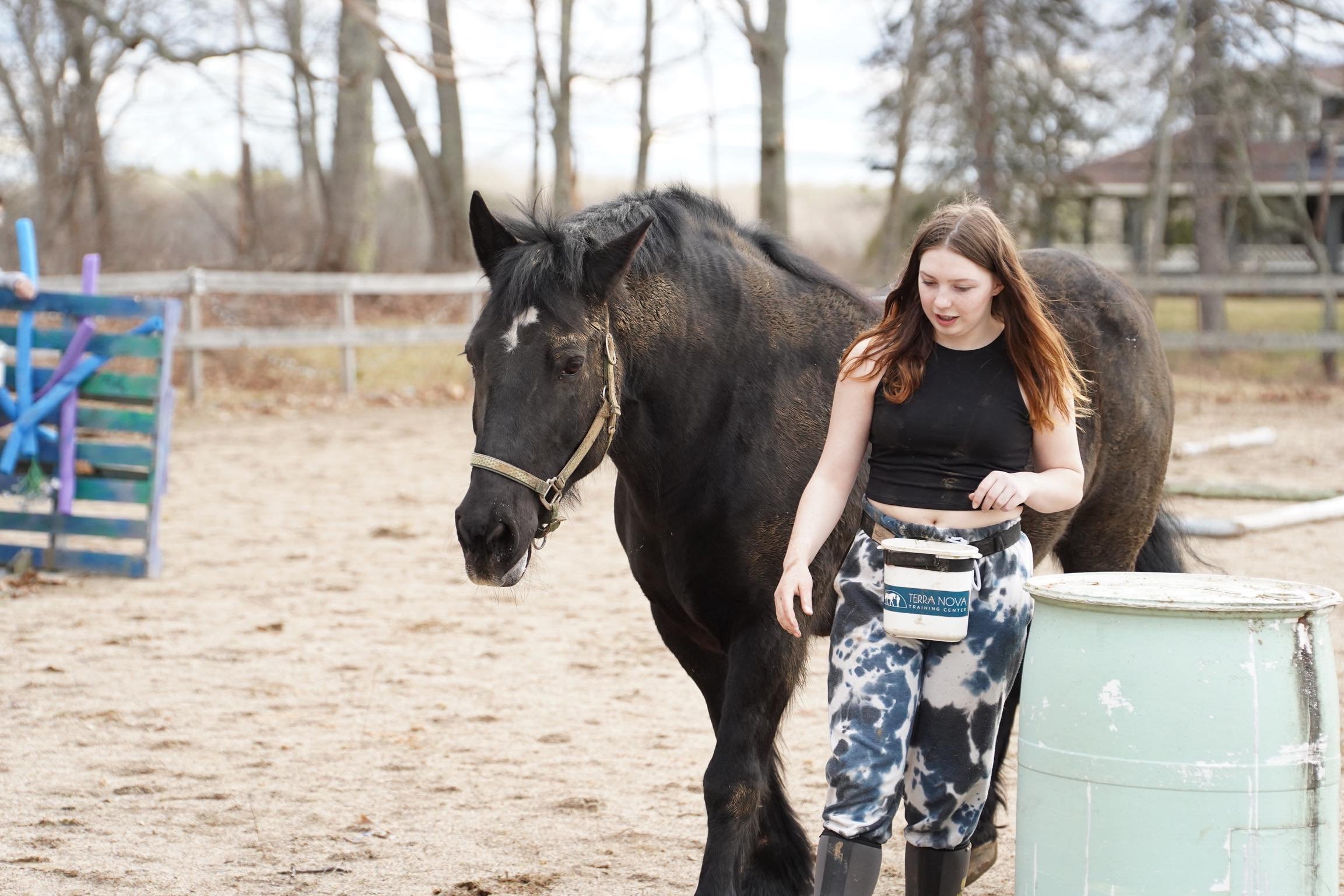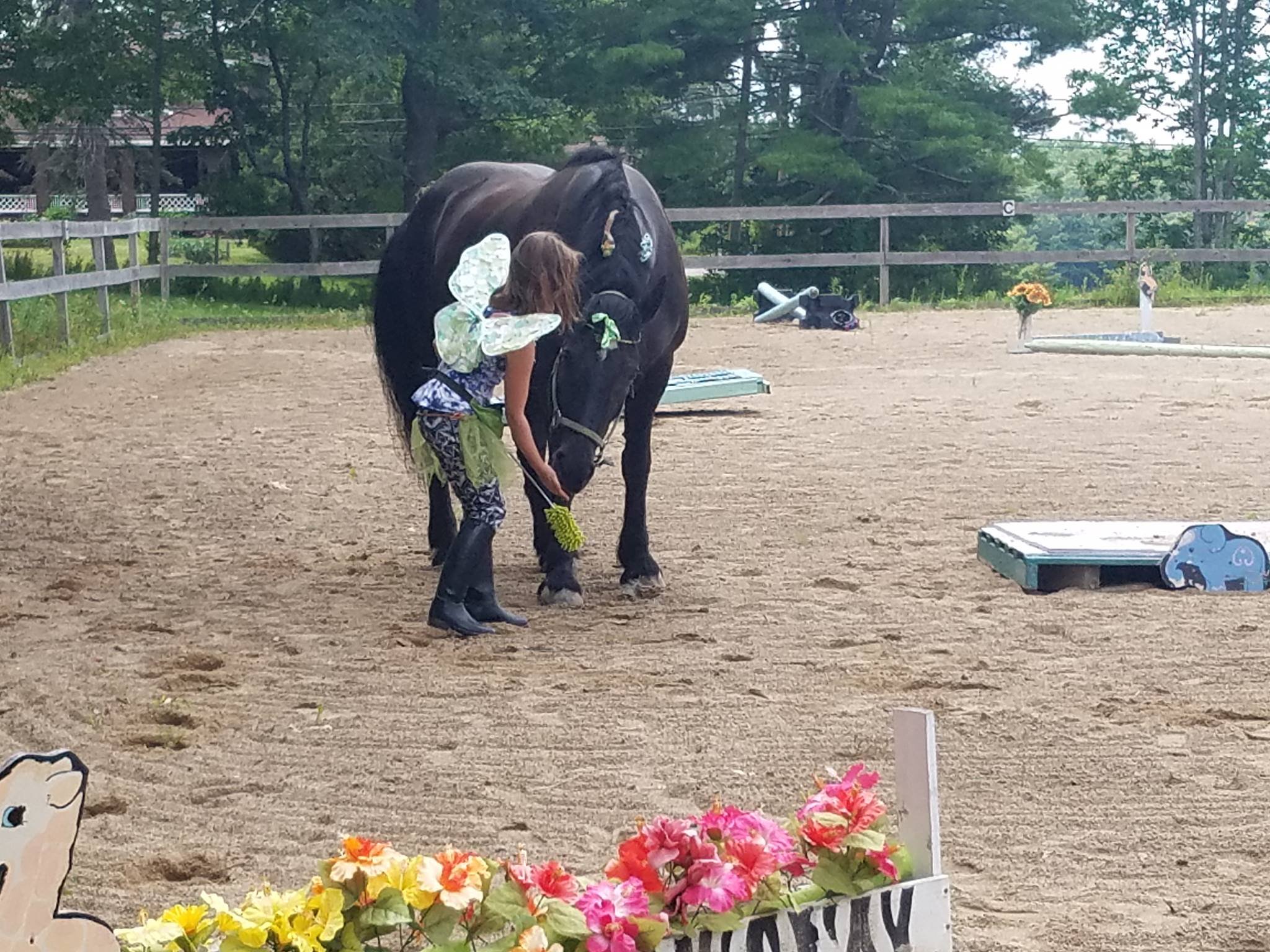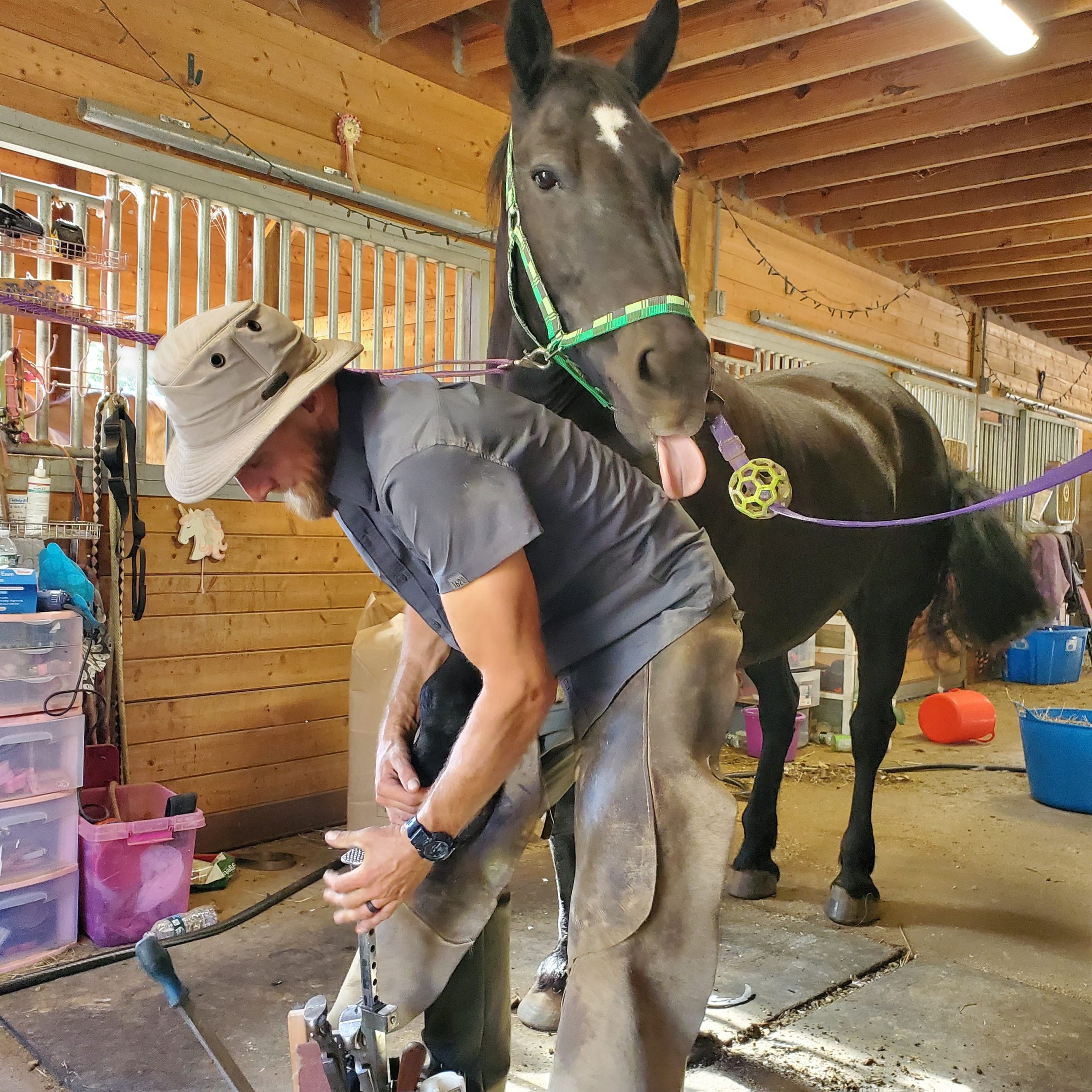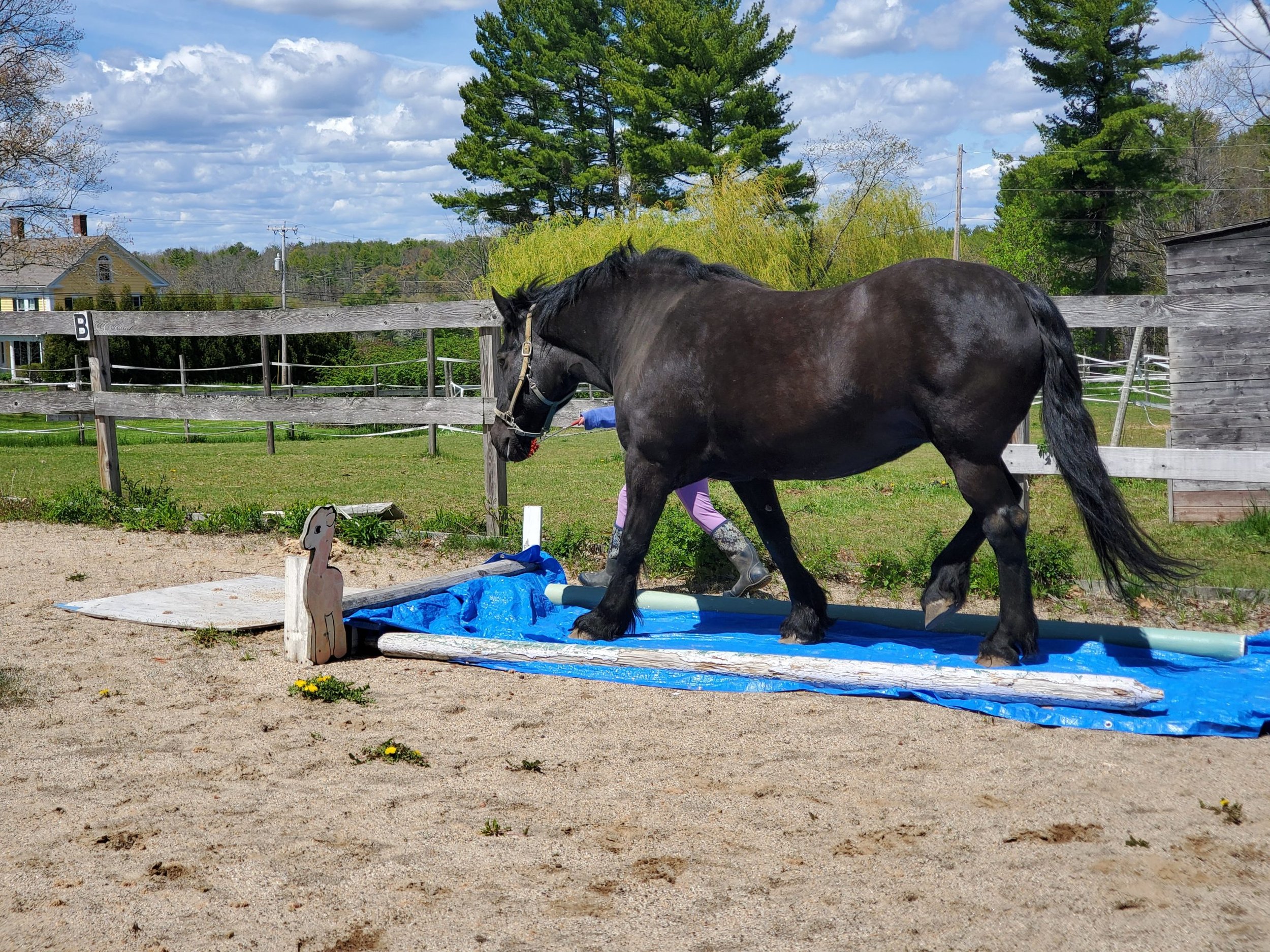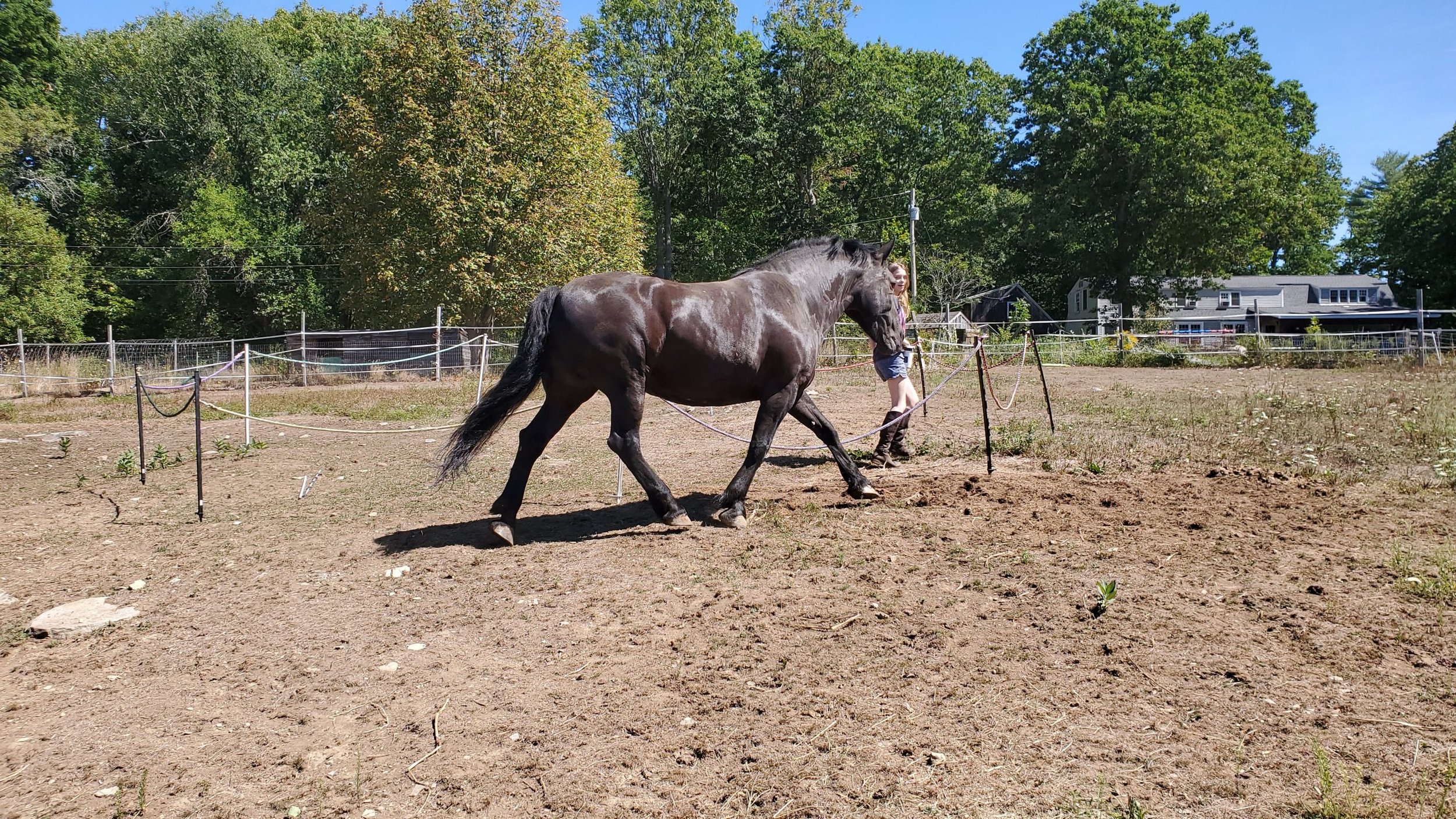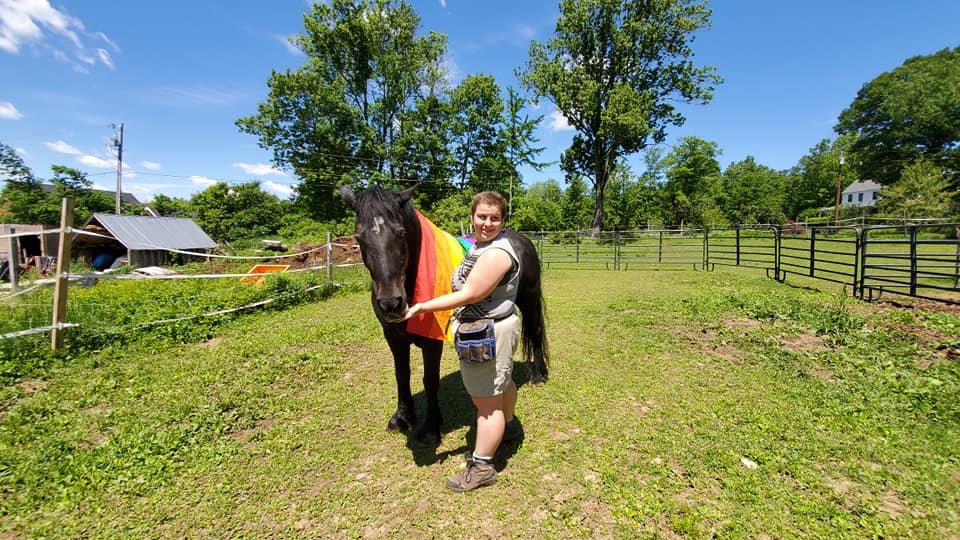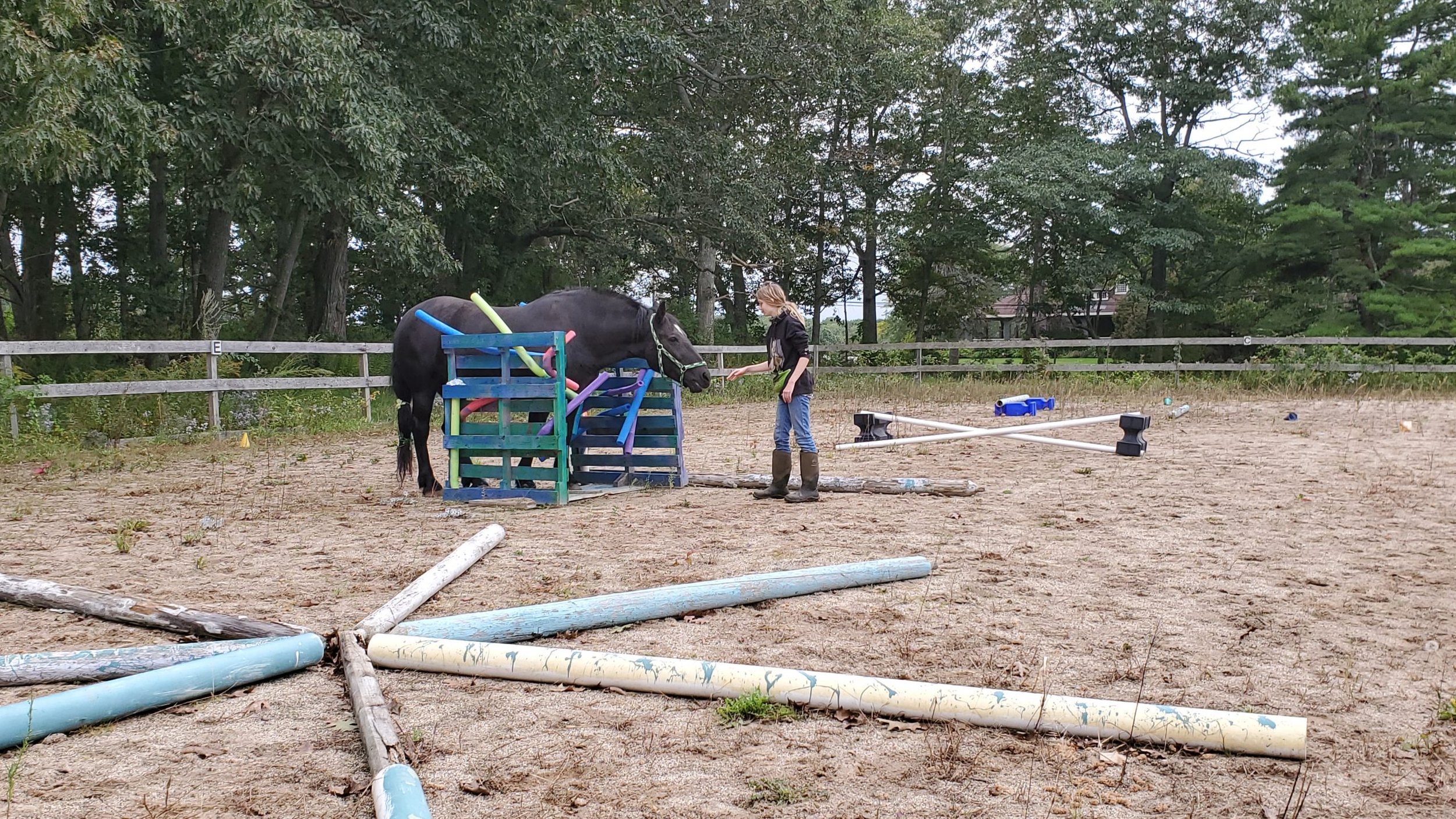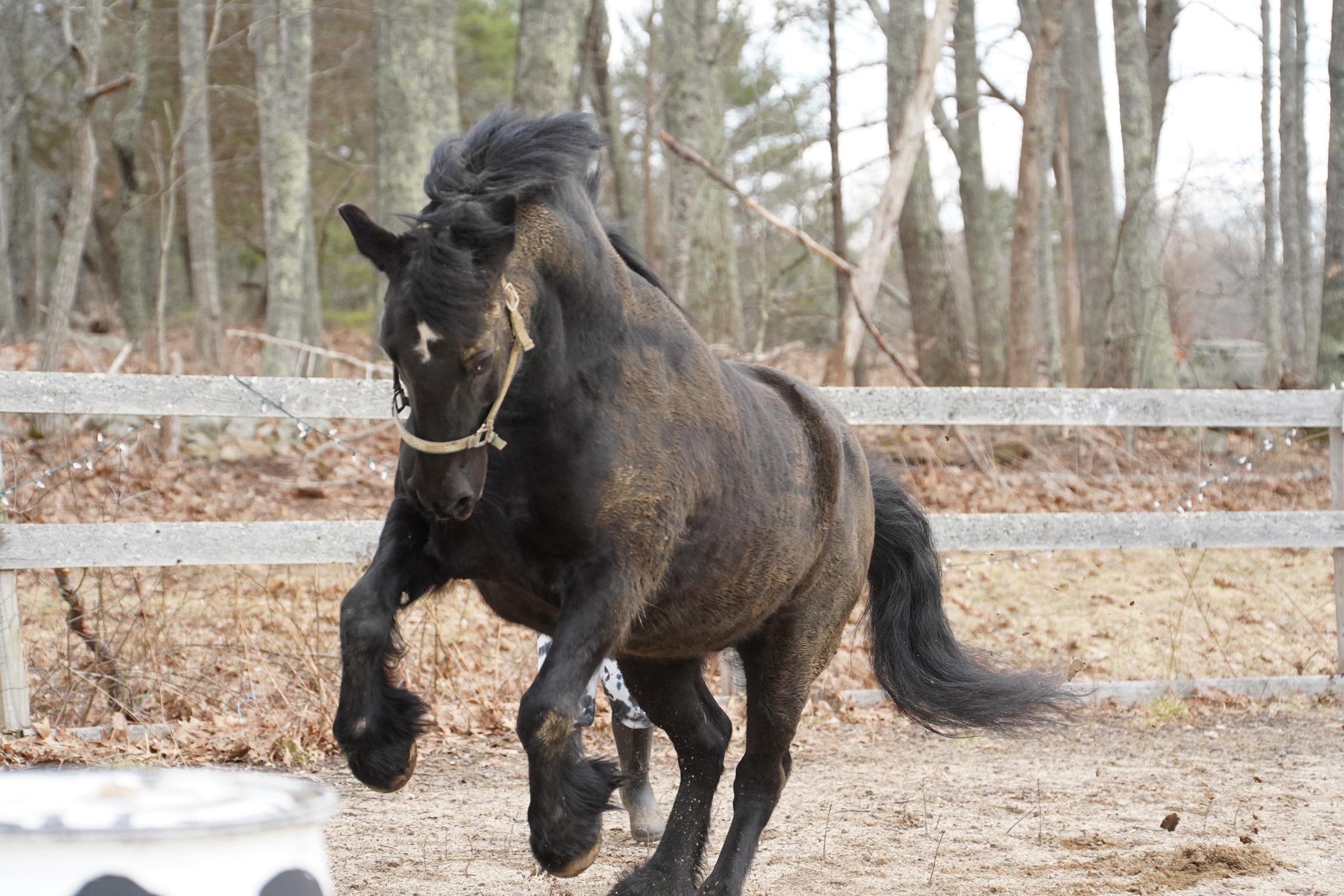
Tank
In 2010 I was finally in a position where I could have my own horse, and I knew they would have to be a special rescue. With a soft spot for draft horses, I kept my eyes open for a small draft in need. When I saw an ad online I went to visit her right away, unfortunately her owner wasn’t able to show me what she knew. The next morning her owner told me he got her on a trailer, so either I can take her or he can drop her at auction. Welp! Looks like I have my first rescue of my very own, even though I’d grown up volunteering at a rescue, she was my own.
When Tank arrived home it became quickly apparent that she was so deeply in fear she couldn’t even function. She hid in her stall and the tiny paddock in front of her stall, all day, every day. She was too scared to venture further into the big paddocks, to join the other horses or explore the farm. If we did get her out of her tiny bubble she would be a huge ball of panic, panic that lasted hours of hysterical spinning and crying. At the time I was only equipped with traditional and natural horsemanship horse handling, I did everything I knew and hired help. The hired help succeeded in getting her out of her bubble and down the lane to the round pen, with great force. But when he let her go in the round pen, she turned the pipe metal fences into a pretzel as she dragged what was left back with her to her stall. I was told she is dangerous and brain damaged, I needed to put her down. Instead I opted to let her live out her life in her bubble and never ask for anything more again.
It wasn’t long later when I started hearing about Clicker Training as an option, an incredible dolphin trainer, Shawna Karrasch, reached out to me and explained why she thought Tank might be receptive to clicker training, even though she wouldn’t respond to buckets of grain. I decided it couldn’t hurt, this was a horse who couldn’t do anything at all anyway. Then quickly it became apparent how well positive reinforcement training worked, in the brain, to change the horse’s feelings and self confidence. It was only a matter of a few weeks before Tank was doing many behaviors for reinforcement, but better than that, she was starting to go on walks, outside her bubble. We could only go on walks without a halter/lead, because the tools had been so poisoned by the force she’d previously known. At first when Tank would get scared she’d bolt back to her stall, but soon she’d start only going halfway back, then back to the target I was holding. Then soon when she spooked she’d jump right to her target. Because it had become to positively conditioned in her life it became like a security blanket for her. Now her safety bubble was where I was, where the target was, not back in her stall. It wasn’t long before Tank could start doing all the things I dreamed of when she first arrived. But I had a long, painful learning curve to be able to be the trainer Tank needed me to be. I needed to reprogram my entire way of thinking about horses and how to approach her handling. I couldn’t use force, she was stronger than anything I could use against her, I needed to rely on her choosing to participate, having the confidence in herself and trust in me not to put her at risk. I spent the next decade studying the complexities of all she’d taught me and bringing this to all our future rescue horses and teaching anyone who wanted to learn, especially the young volunteers here.

